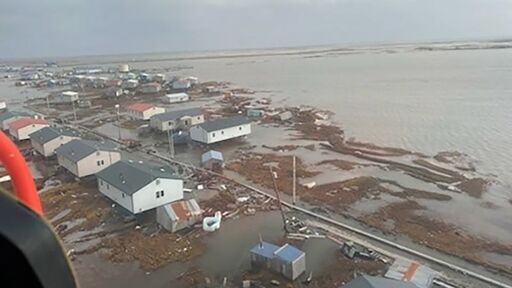The forecast for the powerful and deadly storm that battered small communities in western Alaska over the weekend was likely made worse by a lack of weather data triggered by the Trump administration’s cuts.
There is a gaping hole in weather balloon coverage in western Alaska — a critical shortage bedeviling US forecasts and the National Weather Service since layoffs hit the agency as part of the Department of Government Efficiency’s push to shrink the federal government back in February.
Weather balloons, which are typically launched twice a day, provide crucial information on wind speed and direction, air temperature, humidity and other measurements. Balloon data is fed directly into the sophisticated computer models used to predict the weather.
However, there were few, if any, balloons to take measurements of what the weather was doing as the remains of Typhoon Halong approached Alaska late last week.



There are so many little cuts that are surfacing in the US weather forecasting system this year. Daily forecasts wrong, weekly forecasts wrong. Storms that shouldn’t have happened or moved on just sit and spin. Flights are getting randomly more turbulent, as they don’t have the jet stream forecasts to plot daily routes and have to rely more on the first plane to hit it to report it back. The systems had enough failsafes that are slightly holding them together, but it is extremely apparent the damage is already present and becoming worse.
‘Death by a thousand cuts’